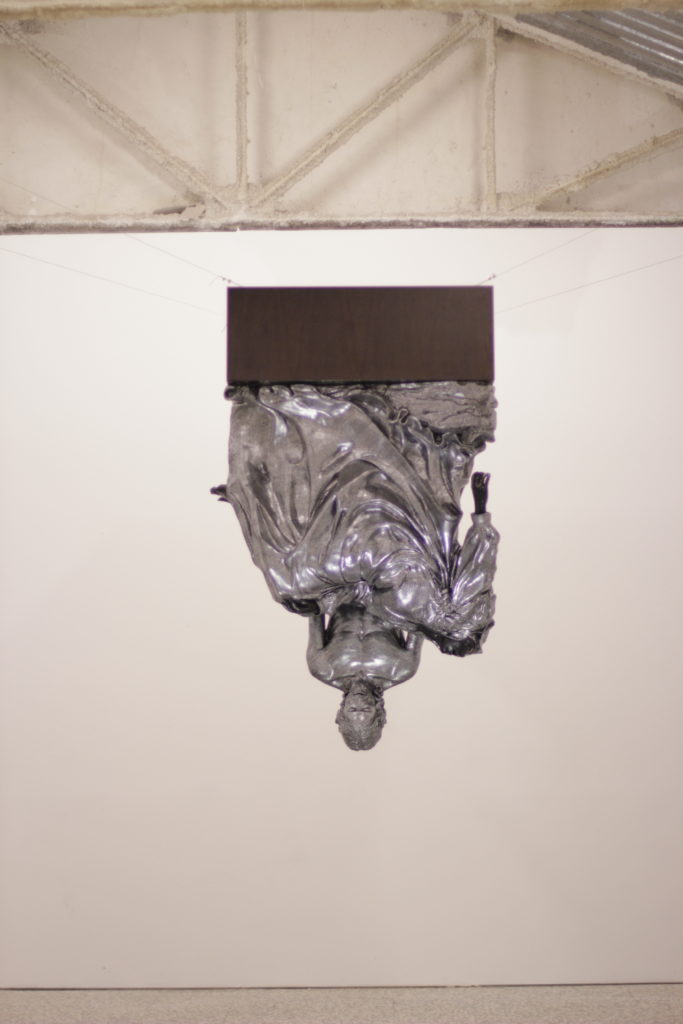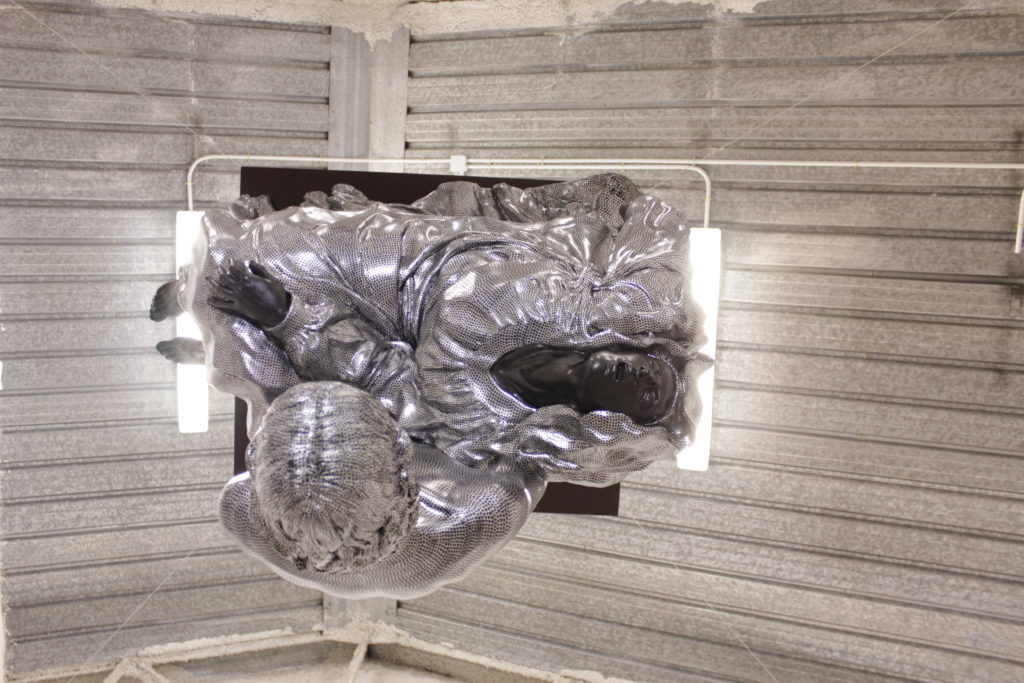
Marina Vargas is a visual artist and sculptor based in Madrid, Spain. Having graduated with both a degree in fine arts in 2003 and a masters degree in arts in 2011 from Granada University, Marina has gone on to have her work exhibited throughout Europe, the US and Mexico.

Where did you spend lockdown?
I spent lockdown in Madrid. In my home-working studio. In my case this pandemic meant a double closure, because in a certain way I was already confined for personal reasons months before. Last November 18, 2019 I was diagnosed with breast cancer and due to the harsh treatment to which I have been subjected, in a certain way I was already confined since that date and the lockdown was a continuation of that confinement that I was previously living.
In Spain, the state of alarm was declared on March 14. As the most affected city in the country, Madrid has been the last city to enter what we call “new normality”.
On May 2, the de-escalation began gradually and people were allowed to go for walks in the parks within certain timetables depending on age or if you were high risk … And until the beginning of June, terraces, restaurants and shopping malls were not reopened, but I am still in my confinement since I am on my second cycle of treatment and at this moment the more cases are starting to show up.
Did you have access to a studio during this time? if not, how did you continue to create work?
I live in my home-studio so I have not been separated from my work. But nevertheless I have not been able to work at a top level.
There is a lot of talk about the pandemic but another reality is that artists can also get sick. Not only did I have to go through six chemotherapy sessions but also surgery during the lockdown. I have not been able to get close to paint, enamels, resins and almost hardly have the strength to draw. I have been reading, and writing an artist’s book that talks about my experience with cancer. I want to make the disease visible since, even today, it is still taboo and I find myself needing to remove ‘The color pink’ from cancer, to put it briefly in some way.
The pandemic and this hiatus were not worrisome to me in the productive sense. I was already prepared for this before. What surprised me was feeling how I somehow felt that I was rebuilding myself at the same time that the world was trying to do it and that synchrony made me see many things from a new prism. Much can be created from active contemplation, not everything has to go to that fast pace and virtual time …
Can you talk through your art making process?
A constant in my work is the interest in ‘the invisible’. Based on this, the ancestral, the sacred, the symbolism and alchemy are constant present in my work.
Also the human body is always present in my work. The body as a container for all these aspects and always from a holistic perspective. Hence my interest and research in astrology, tarot, as well as various vision systems that create languages, perceptions and personal cosmogony that have a lot to do with reality. In this aspect, I am very attracted to visionary or spiritual art.
There are projects that emerge after a long investigation, such as ‘The Lines of Destiny’, which takes the tarot deck as the object of study with the aim of creating my own system and to create my own card deck.
And I also have works that come to my mind in a direct way, like a vision. An example in this sense would be ‘Inverted Piety’ or ‘The Dead Mother’. A work that accompanies me in vital moments throughout my career in the same way that Louise Bourgeoise was accompanied by her spiders.

Either way, I view the execution process as a ritual.
An example would be: ‘Double Reversal’ of ‘Inverted Piety’ or ‘Dead Mother’. In which the use of black color, its layout and even its interior caters to a great symbolic load. The Black Virgins are related to the veneration in ancient times that made the earth goddesses in the ancient cult. The miracles that are associated with black virgins are protection against danger and fertility. This black inverted piety is covered by a silver lattice as a network or armor that covers the entire figure except the face and hands to further highlight its blackness.
I installed this piece for the first time at a show I made at NoEstudio in 2013 called ‘I Don’t Have Guilt’ and in the room I hung the piece mounted on a pedestal from the ceiling. Hanging upside down, in such a way that the viewer was positioned just below. If the viewer was located just below the piece, the vision of her with the dress and the folds makes her seem to float as if she were a witch …

The piece inside contains a druse of white quartz, loaded and cleaned by me. This is the core of the piece. An extra energy that balances black and white, what is above and what is below. It doesn’t matter if nobody knows about the existence of that druse. I know it. This would be an example of how I conceive of the process as a ritual and primacy as a motor and burden on the final result. Without ritual the work would be one more object …

Did you experiment with any new materials or methodologies?
I have experimented with my own body. I feel that I have become one of my sculptures. They have cut me, amputated, puncture, piped… Other hands have shaped me in the last few months, those that are healing me. The ritual is to trust and drop into the arms of the other, in order to continue living. This is my raw material and my new methodology.
Given the limitations and restrictions of the last few months, did your art making practice change at all? If so, do you think that this will continue to change how you will make art going forward?
Given my personal circumstance, more than my process, I changed dimension. In a way of seeing and seeing me. I maintain the hope that in the future there will be a change in the ways of making art, but at the same time I see how as soon as we have settled into the “new normal” all efforts are directed at trying to maintain what we already had, even though we intuit that it was a failed system. The fear of change is very present … Art should be a great transformation tool in that regard.
Did you have any projects during this time that went ahead?
On September 10, a public intervention will be released in the Plaza de Mariana Pineda in Granada. This intervention was postponed due to the pandemic. And right now I am working with the Spanish curator Óscar Alonso Molina on a project that will be released in November at the Gema Llamazares Gallery in Gijón, Spain.
All photographs were provided by Marina Vargas. To see more of Marina’s work visit her website and Instagram.
